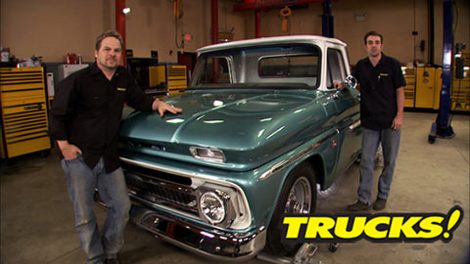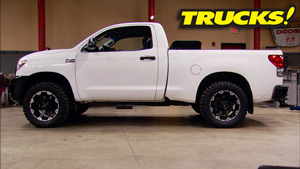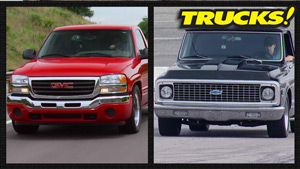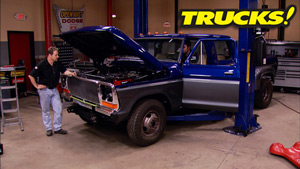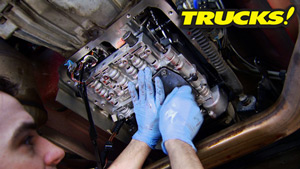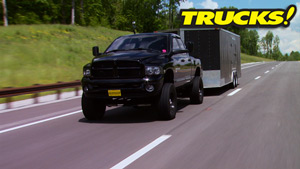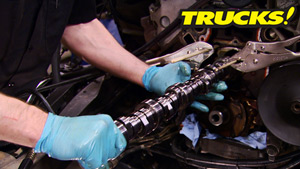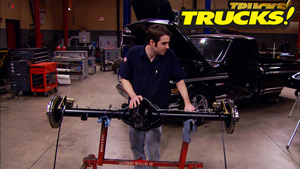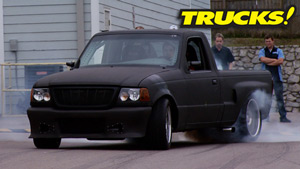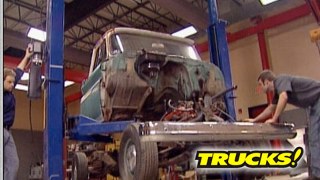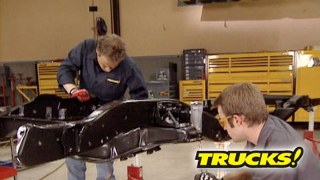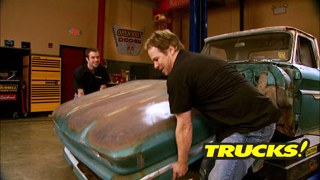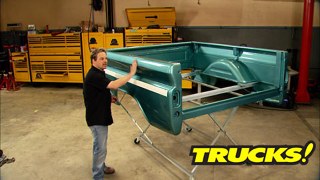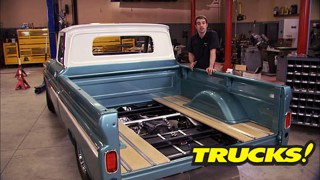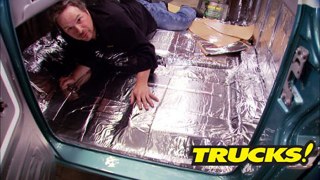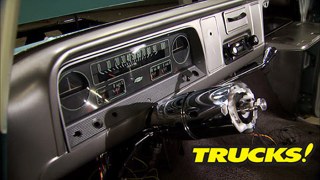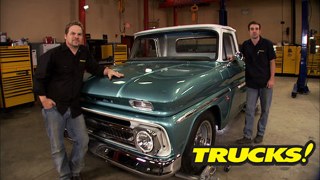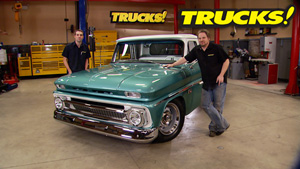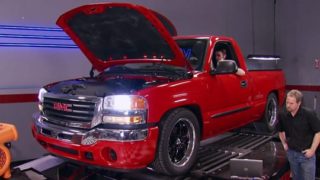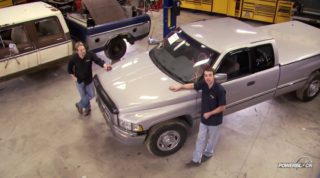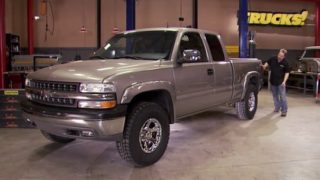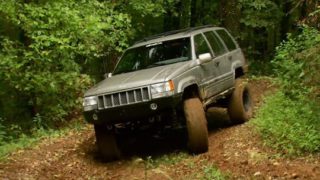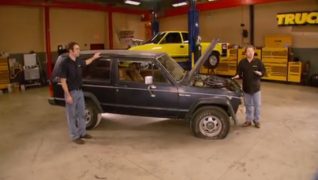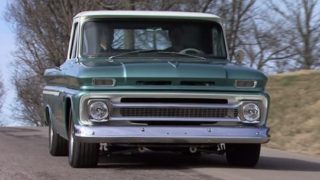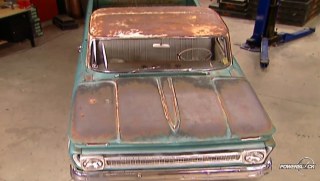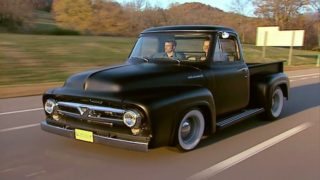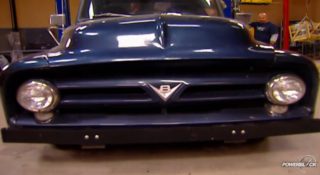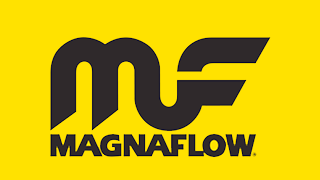More '66 Chevy C-10 Episodes
More One-Half A C-10 Episodes
Trucks! Builds
Want more content like this?
Join the PowerNation Email NewsletterParts Used In This Episode
Magnaflow
2.5" Crossmember back exhaust kit 100% stainless steel with x-pipe and misc. 2.5" straight tubing.
ididit Inc.
1967-1972 Chevy Truck Chrome Tilt Floor Shift Column Deluxe Kit for original harness
Spectre Performance
Chrome steel double groove LWP upper and lower pulleys and GM press fit power steering pulley.
[none]
Maxfilm is a multipurpose, synthetic lubricant that excels in many applications. It deeply penetrates, cleans and loosens rusted parts.
LMC Truck
Complete replacement wiring harness for 60-66 Chevy PU, non A/C.
LMC Truck
Stock replacement radiator and radiator support mount.
LMC Truck
Vinyl bench seat reupholstery kit complete with hog rings and hog ring pliers.
Monster Transmission and Performance
Ford NP271 Fully upgraded remanufactured transfer cases and adapters to fit Chevy,Dodge and Jeep drivelines.
Napa Auto Parts
Master Cylinder Fittings
O'Reilly Auto Parts
Accessory Belt
O'Reilly Auto Parts
3/16" Tubing 5 Ft.
O'Reilly Auto Parts
Electric Fan
O'Reilly Auto Parts
Gallon of antifreeze/engine coolant
O'Reilly Auto Parts
Master Cylinder Fittings
O'Reilly Auto Parts
5/16" Fuel Filter 1 Each
O'Reilly Auto Parts
Gallon of antifreeze/engine coolant.
O'Reilly Auto Parts
Power Steering Hoses
O'Reilly Auto Parts
Fuel Filler Hose, Lower Radiator Hose
O'Reilly Auto Parts
1156 Bulbs
O'Reilly Auto Parts
Lug Nuts (20)
O'Reilly Auto Parts
Heater Hose 4Ft., Water Neck, Thermostat
O'Reilly Auto Parts
Speedometer Cable
O'Reilly Auto Parts
Miscellaneous
O'Reilly Auto Parts
WIX Oil Filter
O'Reilly Auto Parts
Power Steering Gearbox
O'Reilly Auto Parts
16LB. Radiator Cap
O'Reilly Auto Parts
Coolant Hoses
O'Reilly Auto Parts
Steering Linkage
O'Reilly Auto Parts
Copper Tubing Kit
